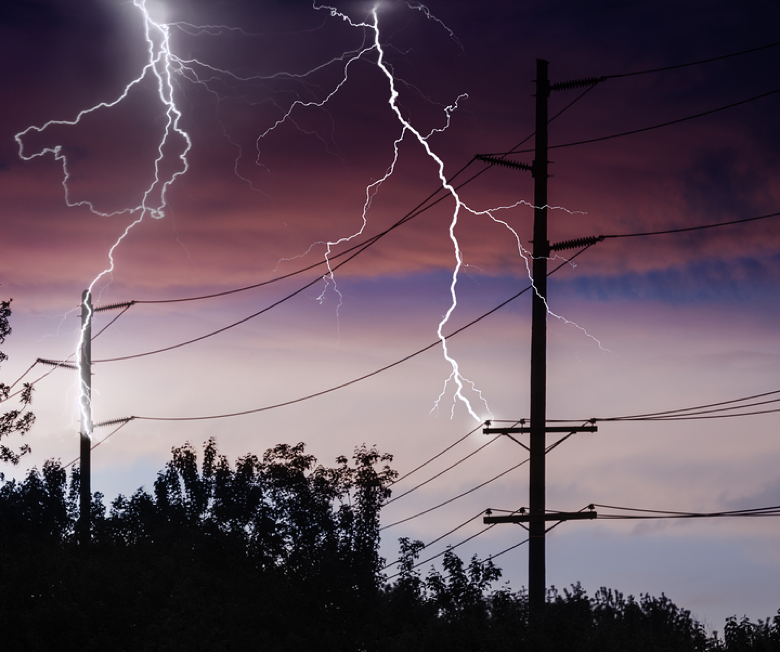AI
Taming Earth, Wind and Fire with AI-Supported Utility Management
August 8, 2018 | Written by: Christopher Behme
Categorized: AI | Cognitive Utilities
Share this post:
Across the country, regulators and lawmakers aim to hold utilities responsible for all power outages, including those caused by weather and natural incidents. With the demand for electricity rising, governments expect utilities to treat the delivery of electrical power as a critical public service that should experience little to no interruption. When an outage lasts for several hours or longer, customer demands to restore power flood call centers, while regulators demand detailed answers on when utilities expect to resume business as usual.
 For instance, in Massachusetts, utilities are required to offer twice-daily updates identifying when an outage will end, and their customer service representatives must be available to speak with customers. The costs for these operations cannot be shifted to the consumer. Similarly, many state regulators also restrict utilities from passing along the costs of repairing damage to customers.
For instance, in Massachusetts, utilities are required to offer twice-daily updates identifying when an outage will end, and their customer service representatives must be available to speak with customers. The costs for these operations cannot be shifted to the consumer. Similarly, many state regulators also restrict utilities from passing along the costs of repairing damage to customers.
Intensifying the pressure, some states fine utilities for not restoring power quick enough. A northeast utility was fined nearly $19 million for not responding adequately to storms in 2011, and the utility was investigated by state regulators for its handling of weather-related outages in 2017. In New Jersey, lawmakers want to increase the fine for outages from $100 per day to $25,000.
Litigation can also put a dent in profits. Utilities now have to pay damages from fires caused by their equipment even if there was no negligence. Pacific Gas & Electric Co. reportedly expects to pay at least $2.5 billion in claims after officials determined downed power lines caused several of the 21 wildfires that devastated Northern California in fall 2017. PG&E is facing 200 lawsuits and expects more. And last year, regulators rejected San Diego Gas & Electric’s request to charge customers $379 million to cover a portion of the utility’s damage claims from three deadly wildfires in 2007 that were caused partly because of power lines and equipment.
Faced with these heightened expectations, utilities must answer increasing consumer demand for power while relying on aging infrastructure that doesn’t help them prepare for weather events and natural occurrences such as the rampant growth of vegetation near power lines and other facilities.
AI Clears the Smoke
If utilities want to improve operations to consistently deliver service, they need a holistic view of their infrastructure, and better data to help support their safety initiatives. Thanks to artificial intelligence, utilities can now get the insight they need to stay ahead of the storm. With a holistic approach that combines current and past weather data alongside a clear, updated view of vegetation growth, AI can help utilities better protect public infrastructure and improve safety, which keeps operations running and minimizes the large costs of outages.
Case in point: A large California utility is using IBM’s Watson to monitor weather conditions and expectations for areas where utility lines, transformers and other equipment criss-cross the state. With real-time data on temperatures, winds, humidity and other conditions, the company now knows what to expect for pinpointed areas.
But it doesn’t end there. Utilities can even learn from the past with historical data on weather-related incidents like forest fires. By pinpointing the statistical thresholds for those events, machine learning can process past data and discover patterns so that utilities can make informed decisions on the present and future actions they must take to ensure an “always on” power grid.
Enter Vegetation Data
Now a third layer of information is being folded into the data: a vegetation index that relieves utilities of the costly and difficult task of studying vegetation growth along power lines. Instead of relying on drones that can’t efficiently reach every area, AI-based visual recognition technology can analyze satellite imagery and determine how tall, wide, dry or wet vegetation is — and how close it is to equipment — so that utilities can discern its potential for sparking a fire or causing an outage during a severe wind event. Receiving all this data in increments as brief as 15 minutes, companies can act fast to stomp out potential trouble, enacting operational safeguards and alerting their incident management teams and customers, and if need be, fire crews or other emergency response units.
With climate change upending weather patterns, and storms increasing in frequency and ferocity, utility management practices must adapt to the times. A proactive, real-time support system that stays on top of unpredictable weather and simplifies difficult vegetation management helps utilities better handle the constant demand for electrical power. Empowered to avoid risk, utilities can focus on the most important goal: keeping customers plugged in and happy.
________________________________________
Visit here to learn more about how IBM can help you predict weather-related outages and optimize your assets.

Partner, Energy & Utilities, IBM GBS
Making the workplace safe for employees living with HIV
The recent promising news about Covid-19 vaccines is in sharp contrast to the absence of a vaccine for HIV, despite decades of research. Unlike Covid-19 with a single viral isolate that shows minimal diversity, HIV circulates in a wide range of strains that so far have proven impervious to a single vaccine. Fortunately, more people […]
Call for Code for Racial Justice Needs You: Join the Movement
IBM has never avoided taking on big challenges. At IBM, we are privileged to drive impact at scale. We take on challenges that transform our clients, impact people’s lives and innovate for future generations as we strive to effect systematic societal change. Over the course of our 109-year history, the evidence has become clear that […]
A New Wave: Transforming Our Understanding of Ocean Health
Humans have been plying the seas throughout history. But it wasn’t until the late 19th century that we began to truly study the ocean itself. An expedition in 1872 to 1876, by the Challenger, a converted Royal Navy gunship, traveled nearly 70,000 nautical miles and catalogued over 4,000 previously unknown species, building the foundations for modern […]





























